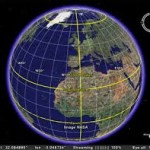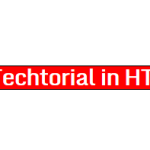Unidentified Network Error
I don't think I have ever come across a computer error that I have not been able to fix within 24 hours, but this one has me perplexed. A quick search on the internet will reveals that I am not the only one. For no reason in particular, my Vista machine will not connect to it's DSL network, and displays "Unidentified Network" with limited connectivity. There are so many suggestion on the web as to how this MIGHT be fixed, that I am listing them all here.
Bonjour DNS Responser Service
Check to see if you have this little devil in your services list: "##Id_String2.6844F930_1628_4223_B5CC_5BB94B87 9762 ##" If you do, stop it and disable it. It is actually the Bonjour DNS Responder Service, and I believe it is the cause of the "Unidentified Network." The Unidentified Network disappeared after stopping this service and a quick disable/enable of the NIC, restoring Internet access.
DNS Server and IP Address
As you can see by looking at the IP addressing information that you have posted above, neither of your two Network Adapters is receiving complete DHCP addressing information from your router. Both are missing the Default Gateway Address and without that any communication outside your local network will be impossible since sent packets don't know where to go to leave the local network. Additionally your D-Link wireless adapter is also missing DNS Servers addressing and without that, that adapter will be unable to resolve FQDNs (Fully Qualified Domain Names like www.microsoft.com) So…. First try to manually assign static values for IP addressing information for both devices use the following information; D-Link DWA-140 (wireless adapter) IP Address 192.168.1.221 SubNet Mask 255.255.255.0 Default Gateway 192.168.1.254 DNS Server Preferred 192.168.1.254 Intel 82566DM-2 (wired Gigabit Adapter) IP Address 192.168.1.222 SubNet Mask 255.255.255.0 Default Gateway 192.168.1.254 DNS Server Preferred 192.168.1.254 OK your way back out of there in both case and reboot the machine, go back and make sure the static assignments have been preserved through the reboot. If that still doesn't seem to help then go back and adjust the DNS address information to a public DNS server solution like Google's which are Preferred = 8.8.8.8 Alternate = 8.8.4.4 Or even better determine the DNS server addresses from you ISP provider. They should be present if you look at the Router's WAN page. OK your way back out of there and see if that helps. As a last resort try contacting your ISP it may be an issue that they may be familiar with and may be able to resolve with either a firmware update for their device or a particular configuration setting that we may not know about. Minimally they should at least be able to tell you their DNS server addresses which may help if you can't determine them through other means.
Set Static IP Addresses:
NOTE: I used ipconfig /all to get the available IP address, subnet mask, default gateway and preferred DNS server for your network to proceed with this fix.
- Open Network Connections from Start > Control Panel > Network Connections
- Right-click your active network connection and select Properties
- Uncheck the following from the “This connection uses the following items” list
- Internet Protocol Version 6 (TCP/IPv6)
- Link-Layer Topology Discovery Mapper I/O Driver
- Link-Layer Topology Discovery Responder
- Select Internet Protocol Version 4 (TCP/IPv4) and press Properties
- Choose “Use the following IP address” and then provide your IP address, Subnet mask, Default gateway, Preferred DNS Server in the available text fields
- Press OK to confirm changes
- Press Close to close the Properties dialog
- Right click your active network connection and select Disable
- Right click your active network connection and select Enable
- Wait 5-10 seconds for the status to change to “Local and Internet”
Assign MAC address for network card.
Vista does not preset a MAC address for the network card. As a result the network card identifies itself as: 00-00-00-00-00-00 this causes problems with any standard equipment. To fix this go to: Device Manger and view driver details for the network card. To set your MAC Address: Once on the properties page for your network controller: Click on the "Advanced" tab and then "Network address." You will see that the option Not Preset is ON To the right, fill in the "Value" with a unique address. It should be 12 characters using hexadecimal digits example: 001a2b3c4d5e
alternative post—–
In a case, Vista can't join the domain or connectivity issue, check teh Mac adderss using ipconfig /all. Due to the hardware problem, the Mac Address may reset to 00-00-00-00-00-00 . To resolve the issue, please following steps: In the Local Area Connection Properties –> Select "Configure" –> Advanced –> from the Properties select "Network Address" enable the Value and put any mac address like 09-00-34-60-EA-A8 then click OK. Run ipconfig/all and check if the MAC address changed.
Microsoft Support Registry Edit – DHCP BROADCAST FLAG
Go to http://support.microsoft.com/default.aspx/kb/928233and make only the registry modification described under "MORE INFORMATION". (Note: I did NOT make the first registry edit listed on that page, i.e. steps 1 through 7.)
Reset IP Address
i reset the ipaddress to get automatically in IPv4 of my wireless, but it didnt instead again gave a static ip to the adapter without a gateway address. but this solved the problem. of multiple network. but i was still not able to browse the internet so i manually inserted the ip address of my netgear wireless as the gateway to my wireless network adapter and i was able to surf the net and there is only one (the right setting) network displayed in the taskbar area. The problem is considered to be solved until it reouccurs (YN) So the solution is reset the IP Address in the IPv4 of ur wireless and set the Gateway to the IP Address of the Wireless rrouter also set the same IPaddress (IP Address of the router) as the DNS address of your Wireless network adapter. This should solve the problem.
Reset Default Gateway
1. Go to Control Panel >> Network and Internet >> Network and Sharing Center 2. Click 'View Status' next to the connection name. 3. Clicks the 'Properties' button at the bottom. 4. Highlight 'Internet Protocol Version 4 (TCP/IPv4)' and clicks 'Properties' 5. In the properties dialog click 'Advanced' 6. Under 'Default gateways' there will probably be a entry for '0.0.0.0'. Remove this entry. 7. 'OK' out of all the property dialogs until you are at the 'Network and Sharing Center' again. The adapter will attempt to reconnect again, when it does your problem will hopefully be resolved.
Ethernet Adapter Driver reinstall
> I found the resolution and it was very simple. After numerous tries and > nothing working with a variety of tips, I decided to try something and > it worked. I am also using calbe internet via ethernet cable. This was > where my problem lied. The wireless part worked fine through my Netgear > router. Resetting IP and default gateways did nothing so I decided to > uninstall the driver for my ethernet adapter, rebooted and installed > the driver again. It the was able to identify my router and connected > right away.
Norton Uninstall
Norton needs to be uninstalled completely using the norton uninstall tool – McAfee uninstall tool
Disable iIPv6
- Run regedit. 2. Navigate to HKEY_LOCAL_MACHINESYSTEMCurrentControlSetServicestcpip6Parameters
- Rightclick on Parameters
- Choose New > DWORD Value
- Replace <New value #1> with DisabledComponents
- Doubleclick on DisabledComponents
- Enter value 255 (This will Disable IPv6 completely)
- Close Regedit and restart your system
Reset Winsock (Vista)
To reset Winsock in Vista: 1.Click the Windows Start button. 2. Type Cmd in the Start Search text box and press Ctrl-Shift-Enter (keyboard shortcut to run Command Prompt as Administrator). Click Continue to allow elevation request. 3. Type netsh winsock reset in the Command Prompt shell, and then press the Enter key. 4. Type netsh int ipv4 reset in the Command Prompt shell, and then press the Enter key. 5. If you use ipv6, type netsh int ipv6 reset in the Command Prompt shell, and then press the Enter key. Note: you may need to run Network Diagnostics afterwards to "repair" your connection after this. .










